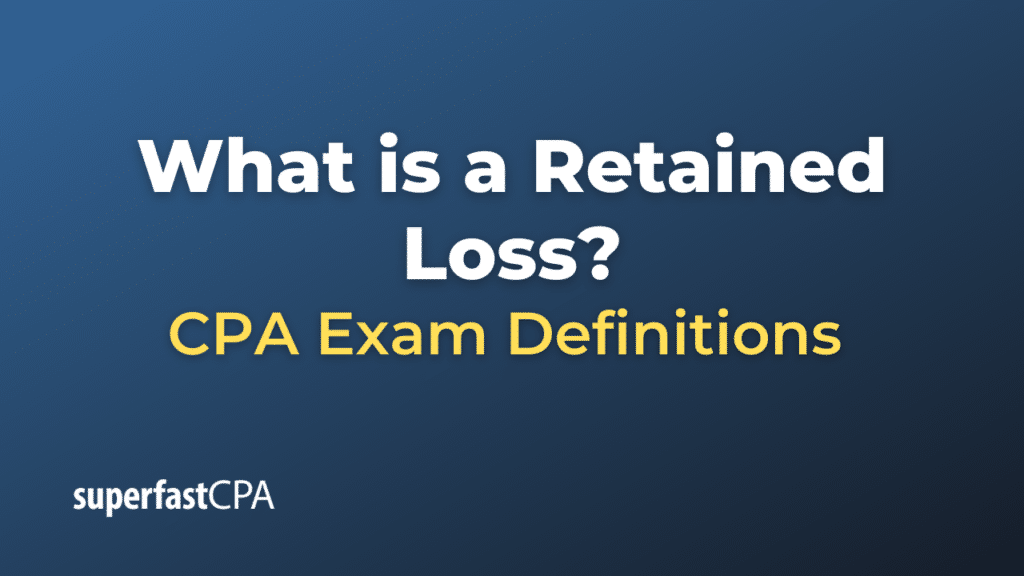Retained Loss
A “retained loss,” often referred to as an “accumulated deficit,” is the cumulative amount by which a company’s losses exceed its profits over its history. This situation arises when a company has historically incurred more losses than it has earned profits. In essence, it’s the opposite of retained earnings, which represent the cumulative amount of net income retained by a company after distributing dividends to shareholders.
An accumulated deficit can be a red flag to investors and creditors, as it indicates a history of unprofitability. However, it’s important to consider context. For newer companies or those in certain high-growth sectors, accumulated deficits may be more common, especially if the firms are prioritizing growth or development over immediate profitability.
On a company’s balance sheet, the accumulated deficit will be listed under the equity section, showing as a negative amount that reduces the total shareholders’ equity.
For instance, if a company’s total shareholder’s equity is $500,000 but it has an accumulated deficit of $100,000, then the net shareholders’ equity (equity value considering all components including retained losses or gains) would be $400,000.
Example of a Retained Loss
Let’s explore a hypothetical scenario involving a tech startup company named “NexTech Innovations.”
NexTech is a new tech startup company focusing on the development of innovative virtual reality (VR) technologies. The company has yet to make substantial sales, as it’s primarily investing in research and development.
Year 1:
- Retained Earnings (Beginning of Year 1): $0 (NexTech is a new company.)
- Net Loss (Year 1): -$150,000 (The company spent more than it earned, leading to a loss.)
- Dividends Paid (Year 1): $0 (NexTech didn’t distribute any dividends.)
Retained Loss (End of Year 1) = Initial Retained Earnings + Net Loss − Dividends
Retained Loss (End of Year 1) = $0 + (-$150,000) – $0 = -$150,000
At the end of Year 1, NexTech Innovations has a retained loss (or accumulated deficit) of $150,000.
Year 2:
- Retained Earnings (Beginning of Year 2): -$150,000 (Carried over from Year 1.)
- Net Loss (Year 2): -$100,000 (Still investing heavily in R&D without substantial revenue.)
- Dividends Paid (Year 2): $0
Using the formula:
Retained Loss (End of Year 2) = Beginning Retained Loss + Net Loss − Dividends
Retained Loss (End of Year 2) = -$150,000 + (-$100,000) – $0 = -$250,000
At the end of Year 2, NexTech Innovations has an accumulated deficit of $250,000.
This scenario paints a picture of a typical startup company that incurs losses in its initial years as it invests heavily in product development and market positioning. While an accumulated deficit can be a concern, it’s essential to understand the company’s growth strategy and potential future profitability. For NexTech, the hope might be that their investment in R&D leads to groundbreaking products that will yield substantial profits in the coming years, ultimately reversing the accumulated deficit.













